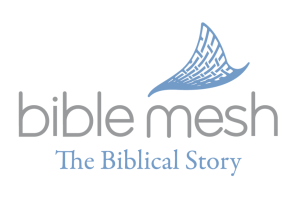

How to Read the Bible for All Its Worth
Featuring newly updated material and lessons by professors and authors Douglas Stuart and Mark Strauss, this course focuses on historical contexts of the Bible and explains differences between Old Testament narratives, the Epistles, Gospels, Parables, Psalms, and more.
At a Glance
- A full introduction of foundational principles required to understand the Bible correctly
- Insight into the ten basic genres in the Bible and how to correctly interpret each
- Access to all course material—video lectures; readings enhanced by graphics and charts; key concept reviews, and quizzes
- Access to the Cerego learning system to build memory retention of course objectives
- 24/7 access for 12 months to complete the course at your own pace
More Details
Understanding the Bible isn’t for the few, the gifted, the scholarly. It’s for everyone. The Bible is meant to be read and comprehended by everyone from armchair readers to seminary students. A few essential insights into the Bible can clear up a lot of misconceptions and help disciples of all kinds grasp the meaning of Scripture and its application to your twenty-first-century life.
This introductory course, How to Read the Bible for All Its Worth featuring professors and authors Douglas Stuart and Mark Strauss, covers everything from translation concerns to different genres of biblical writing. In clear, simple language, sessions help learners accurately understand the different parts of the Bible and their implications for both ancient audiences and humanity today, so you can uncover the inexhaustible worth that is in God’s Word.All course material—instructional videos, readings, practical exercises, and quizzes—is available online for study at your own convenience.
Course Outline
- Introduction: The Need to Interpret
- The Basic Tool: A Good Translation
- The Epistles: Learning to Think Contextually
- The Epistles: The Hermeneutical Questions
- The Old Testament Narratives: Their Proper Use
- Acts: The Question of Historical Precedent
- The Gospels: One Story, Many Dimensions
- The Parables: Do You Get the Point?
MIDTERM - The Law(s): Covenant Stipulations for Israel
- The Prophets: Enforcing the Covenant in Israel
- The Psalms: Israel’s Prayers and Ours
- Wisdom: Then and Now
- Revelation: Images of Judgment and Hope
FINAL EXAM
About the Technology
Authors & Instructors

Dr. Gordon D. Fee
Ph.D., University of Southern California
Gordon D. Fee is Professor Emeritus of New Testament Studies at Regent College, Vancouver, British Columbia. He is a noted New Testament scholar, having published several books and articles in textual criticism and biblical interpretation, and is an ordained minister with the Assemblies of God.

Dr. Douglas Stuart
Ph.D., Harvard University
Douglas Stuart is professor of Old Testament at Gordon-Conwell Theological Seminary in South Hamilton, Massachusetts, where he specializes in Assyrian and Babylonian languages and literature.

Dr. Mark L. Strauss
Ph.D., University of Aberdeen
Mark Strauss is professor of New Testament at Bethel Seminary in San Diego. He has written The Davidic Messiah in Luke-Acts, Distorting Scripture?: The Challenge of Bible Translation and Gender Accuracy, Luke in the Zondervan Illustrated Bible Background Commentary series, and Mark in the Zondervan Exegetical Commentary on the New Testament.



